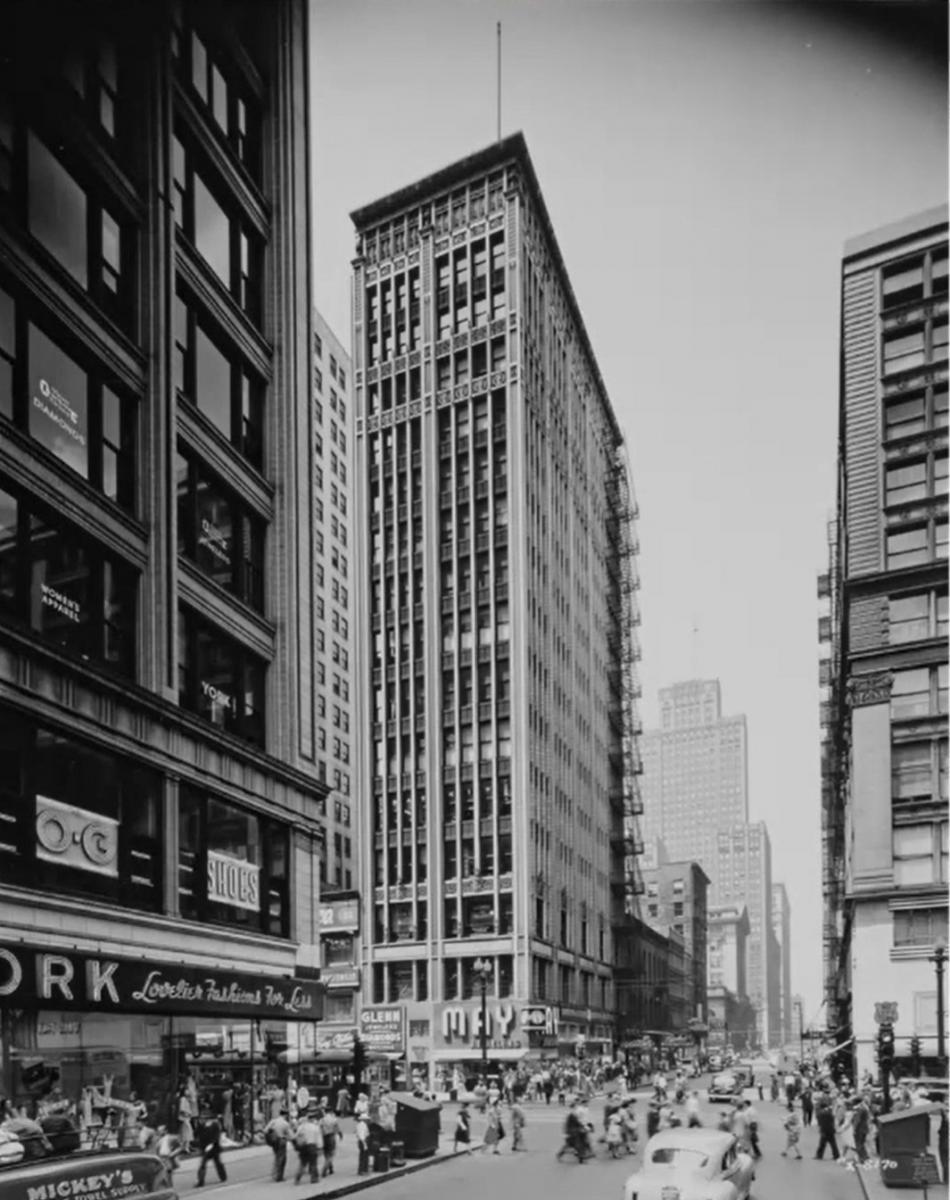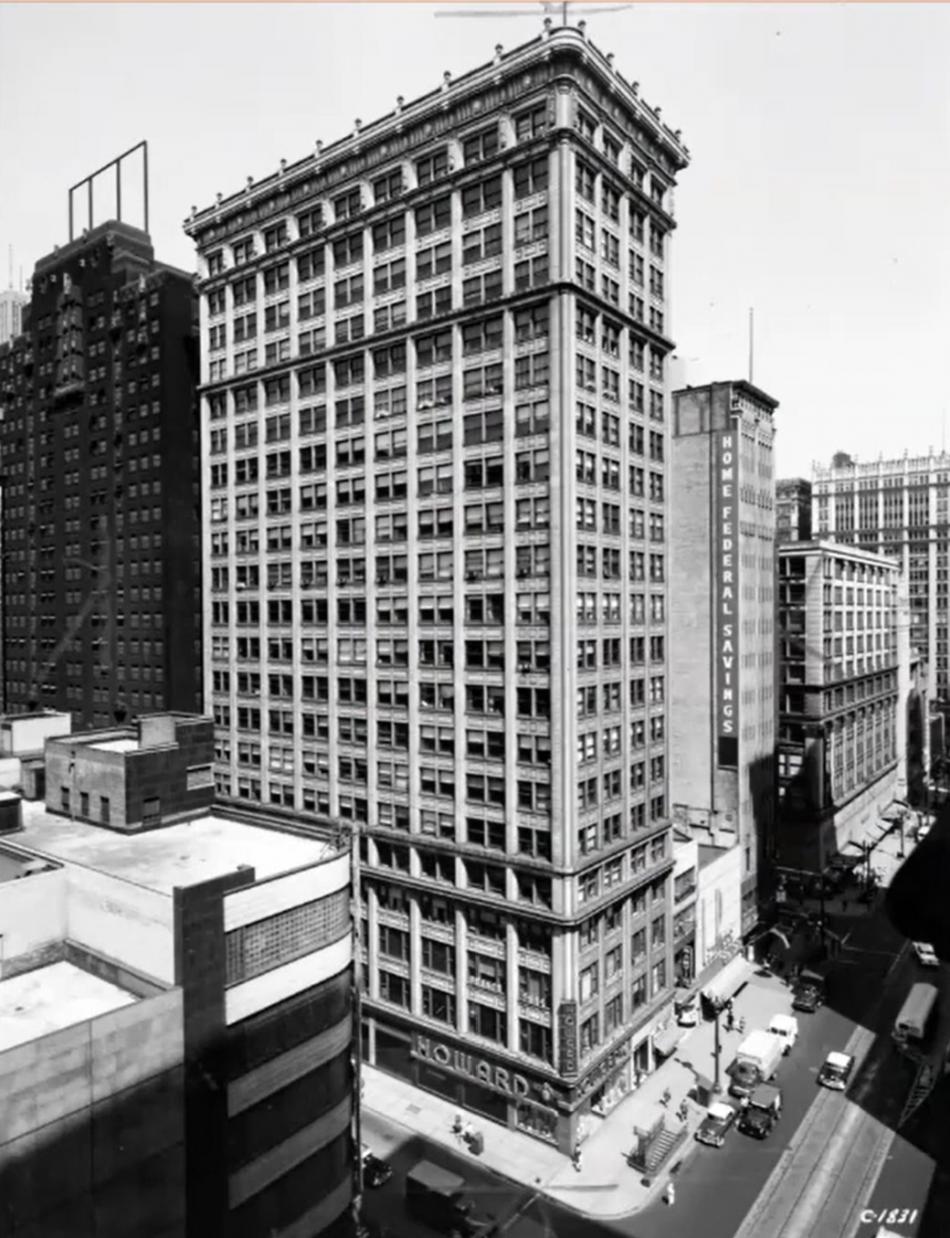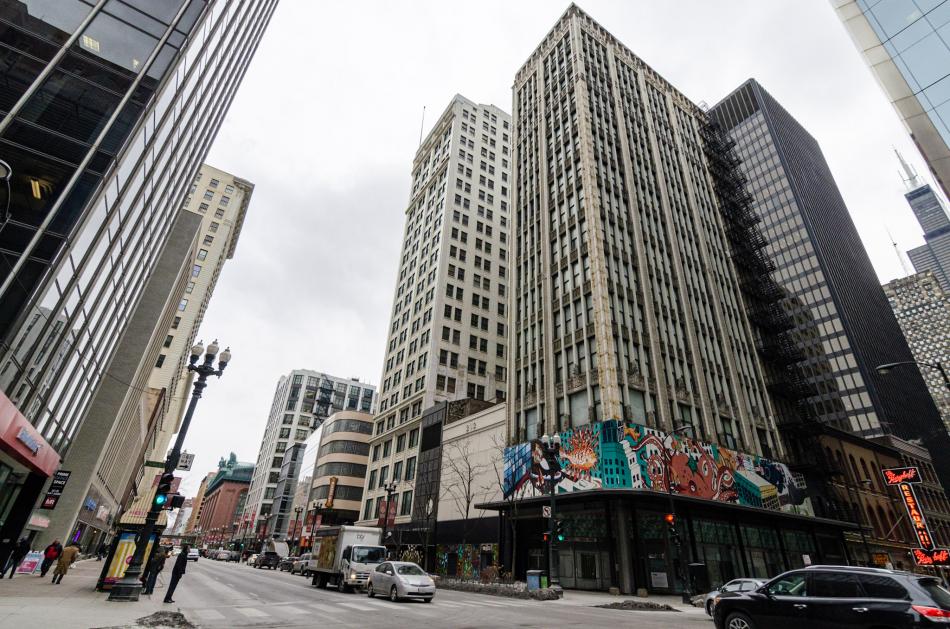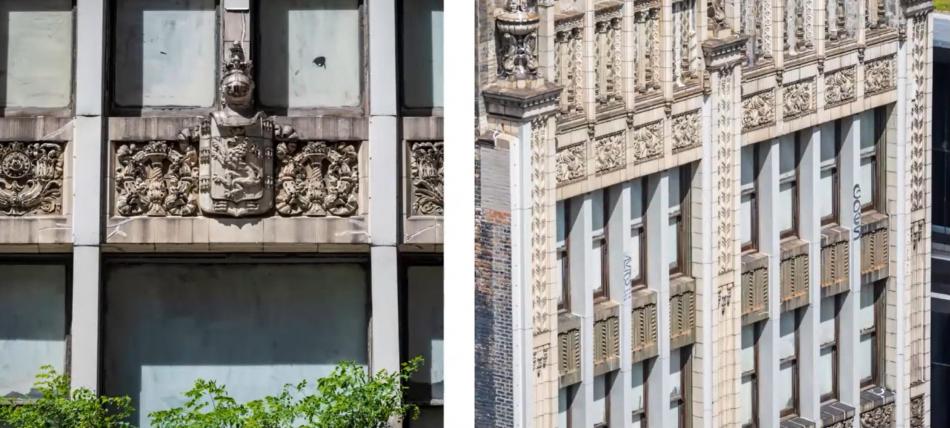The Commission on Chicago Landmarks delayed a vote on the preliminary landmark designation of the Century and Consumers Buildings during its recent monthly meeting on Thursday. The vote would’ve set up a battle between the city and the federally run General Services Administration (GSA), as they seek to spend $52 million in federal funds to demolish the towers, citing security and safety reasons for the Dirksen Courthouse.
With an extremely thorough and detailed presentation, city historic preservation staff outlined how the two buildings each meet three landmark designation criteria, as well as the separate integrity criterion.
Built in 1915-16, the Century Building at 202 S. State is a strong example of an early 20th century commercial style building which was essentially an early urban mall, with shops on multiple levels where customers would pass through and shop. Designed by Holabird & Roche, the tower is designed with the fundamentals of the Chicago School with technological advancements that allowed for taller buildings with more glass and windows. The tower’s overall slenderness, narrow mullions, and recessed spandrel panels gave a sense of verticality to the building that was accentuated with its white glazed terracotta cladding.
Built just a few years earlier, the Consumers Building was completed in 1913 by developer Jacob L. Kesner, with Mundie and Jensen as the architects. Located at 220 S. State, the tower was built as a professional office building with extensive retail space on the lower floors. Also built in the commercial style with the tradition of Chicago School, the building’s steel frame is expressed by a more solid grid-like pattern of narrow, vertical piers and horizontal spandrel bands. The building also retains its lavish interior lobby, with Carrera marble on the walls and ceilings with classical revival detailing. A marble staircase sits in an alcove while the space is adorned with decorative bronze fixtures.
The GSA provided a statement to the commission that they will be impartially conducting the Section 106 process from the National Historic Preservation Act, which directs them to consider viable alternatives to the proposed demolition. They remain officially neutral on the proposed landmark designation.
A statement from Hon. Rebecca Pallmeyer, chief judge of the Northern District of Illinois, reiterated her past claims of security and safety concerns, while also claiming that they see a public benefit to demolishing these buildings and reorienting the entrance of the Dirksen Courthouse east towards State St.
With all that under consideration, Chairman Wong of the commission chose to delay a vote, citing the unusual situation and vague claims of safety issues. While he agreed that the buildings clearly meet landmark designation criteria, his concern is with landmarking the buildings in a way that allows them to be rehabilitated in ways that provide reasonable and necessary security for the courthouse.
The landmarks staff has been directed to work with the relevant city and federal agencies to identify specific safety issues that the buildings pose while the GSA proceeds with their Section 106 process. The GSA will be setting up public meetings in the next few weeks as part of that procedure.











